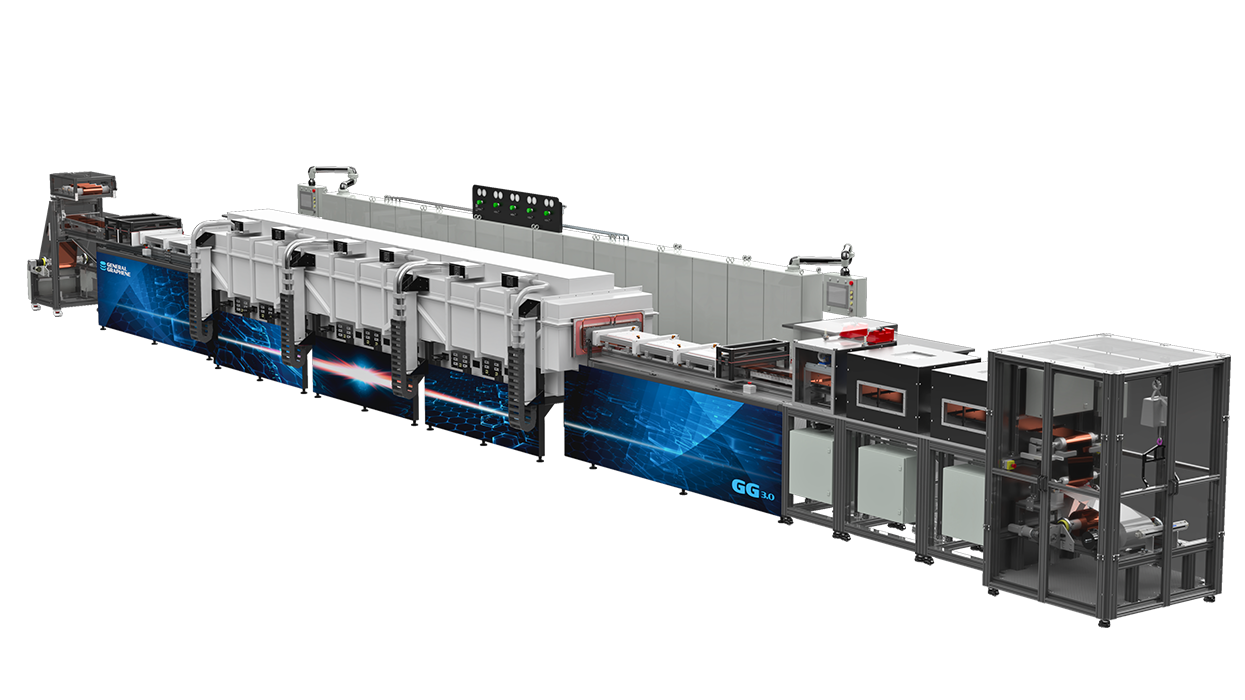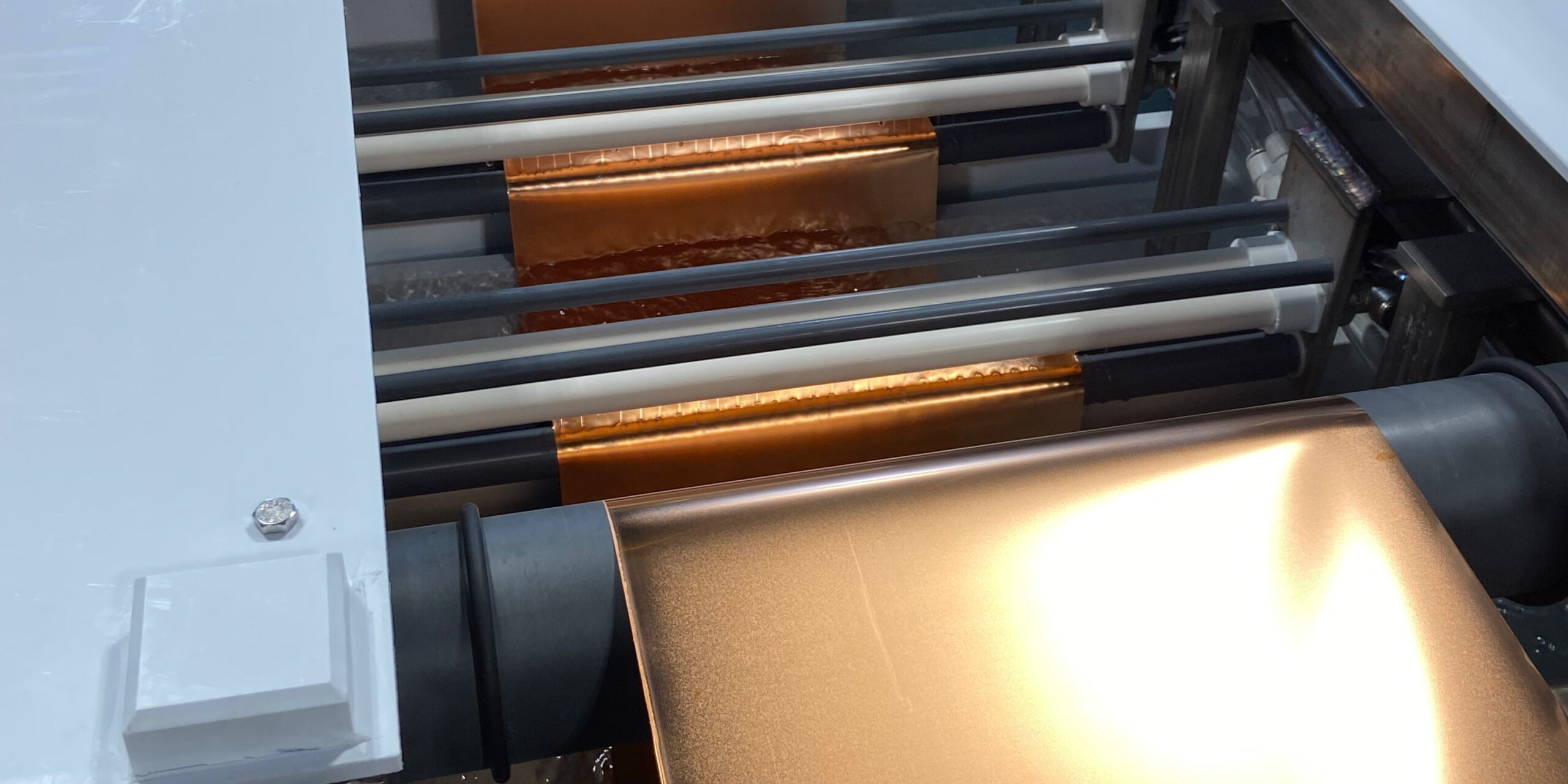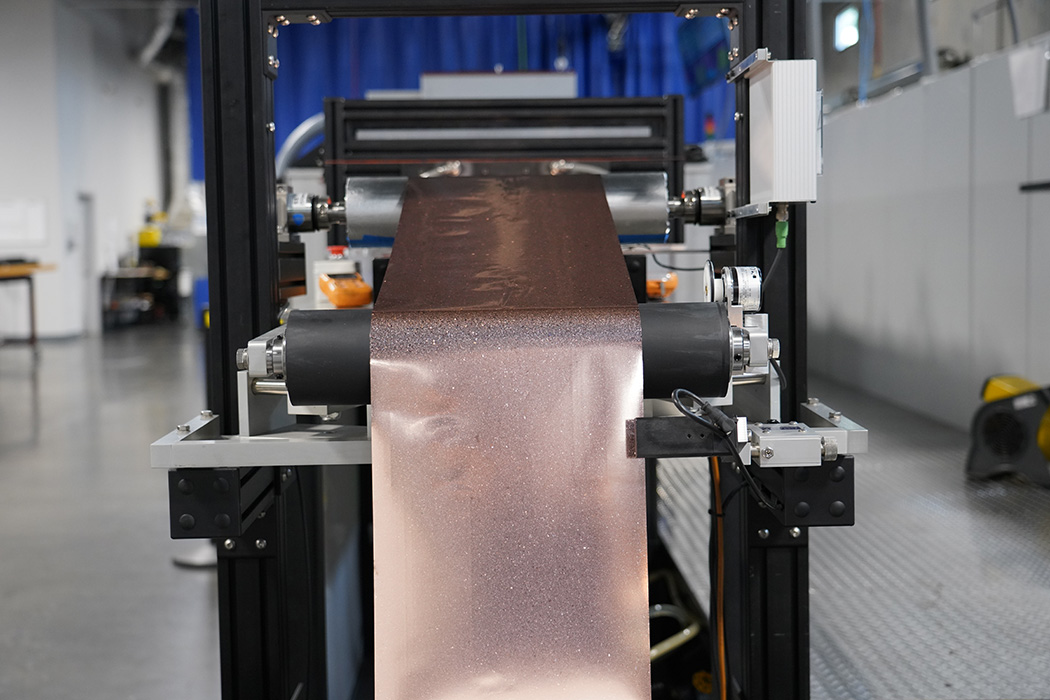CVD Graphene Production Technology
General Graphene has always believed that making graphene requires combining the subtleties associated with science and engineering. Our proprietary atmospheric roll-to-roll CVD production technology combines state-of-the-art innovations in graphene science and engineering to deliver affordable graphene at scale for researchers and industries across the world.


The Process
1. Metal Substrate Pre-treatment
The copper foil catalyst undergoes an electropolishing step followed by rinsing with water and solvents. The catalyst is then heated to anneal the surface, tune the catalyst grain structure, and eliminate any remaining surface contaminants.

1. Metal Substrate Pre-treatment
The copper foil catalyst undergoes an electropolishing step followed by rinsing with water and solvents. The catalyst is then heated to anneal the surface, tune the catalyst grain structure, and eliminate any remaining surface contaminants.


2. Graphene Growth
Graphene growth begins when the metal catalyst substrate is conveyed through the furnace and exposed to a hydrocarbon gas mixture at high temperature under atmospheric conditions. The hydrocarbon gas adsorbs onto the catalyst surface, where dehydrogenation occurs, leaving elemental carbon atoms adsorbed on the surface. These carbon atoms diffuse and attach to nucleated hexagonal graphene crystals, eventually merging to form a continuous single-layer or multi-layer graphene sheet. Our process allows us to control the synthesis of graphene crystal size, number of layers, and defect density by carefully adjusting factors such as catalyst composition, pretreatment steps, hydrocarbon gas mixture, growth temperature, and substrate retention time under heat.

2. Graphene Growth
Graphene growth begins when the metal catalyst substrate is conveyed through the furnace and exposed to a hydrocarbon gas mixture at high temperature under atmospheric conditions. The hydrocarbon gas adsorbs onto the catalyst surface, where dehydrogenation occurs, leaving elemental carbon atoms adsorbed on the surface. These carbon atoms diffuse and attach to nucleated hexagonal graphene crystals, eventually merging to form a continuous single-layer or multi-layer graphene sheet. Our process allows us to control the synthesis of graphene crystal size, number of layers, and defect density by carefully adjusting factors such as catalyst composition, pretreatment steps, hydrocarbon gas mixture, growth temperature, and substrate retention time under heat.
3. Inline Polymer Coating
Our proprietary GG 3.0 system was integrated with an inline polymer coating system in late 2022, enabling CVD graphene-on-catalyst substrates to be coated with a choice of thin polymer films – serving as a protective coating for the graphene on copper and/or the final substrate on which the graphene is shipped to our partners.

3. Inline Polymer Coating
Our proprietary GG 3.0 system was integrated with an inline polymer coating system in late 2022, enabling CVD graphene-on-catalyst substrates to be coated with a choice of thin polymer films – serving as a protective coating for the graphene on copper and/or the final substrate on which the graphene is shipped to our partners.


4. Curing and Lamination
Once a graphene-on-catalyst substrate is coated with your choice of polymer, it is cured simultaneously in the GG 3.0 pilot line. A structural backer is also applied as the copper-graphene-polymer roll reaches the outfeed of the production line.

4. Curing and Lamination
Once a graphene-on-catalyst substrate is coated with your choice of polymer, it is cured simultaneously in the GG 3.0 pilot line. A structural backer is also applied as the copper-graphene-polymer roll reaches the outfeed of the production line.

GG 3.0 Roll-to-Roll Graphene Production
Commissioned in late 2021, GG 3.0 is the third generation of our CVD graphene production equipment and is the world’s first truly scalable CVD graphene production system capable of synthesizing large-area roll-to-roll graphene films under atmospheric conditions. Our system has a modular design limited to a maximum width of 300 mm and scalable to any length based on demand. This system enables us to leverage our unique experience with developing graphene growth recipes tailored to optimize material properties for a range of applications. Currently, GG 3.0 can produce between 65,000 and 100,000 m2 annually at a direct production cost between 2-3 orders of magnitude lower than the market.

